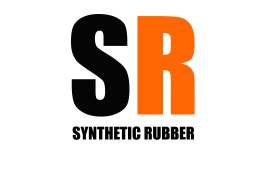Rubber to Metal Bonded
Category
-
Rubber Sheeting
- Anti Fatigue Rubber Mat
- Check Plate Rubber Mat
- Electrical Insulation Rubber Mats
- EPDM Sheet
- ESD Anti Static Rubber Mats
- Fined Ribbed Rubber Mat
- Latex Sheet | Natural Rubber Sheet
- NBR Sheet
- Neoprene Sheet
- Neoprene Sheet c/w fabric insertion
- Round Stud Rubber Mat
- Rubber Sheet with Fabric Surface | SBR Sheet
- Silicone Rubber Sheet
- Willow Mat | Diamond Plate Rubber Mat
- Rubber Gasket
- Rubber Flexible Joint
- Rubber Fender
- Road Safety Rubber Products
- PVC Curtain Strips
- Anti-vibration Pad
- EPDM Sponge
-
Extrusion
- Custom Made Rubber Extrusion聽
- Edge Trim Door Seal | Self-Gripping Door Seal
- L Shaped Door Packing
- NBR Rubber Cord
- Rubber Container Door Seal Extrusions ( J Shaped)
- Rubber Gate Seal Extrusions
- Rubber Hatch Door Seals
- Rubber P Profile Extrusions
- Rubber Right Angle L Extrusion
- Rubber T Profile Extrusions
- Rubber Tadpole Extrusions
- Rubber Tank Strap Extrusions
- Rubber Wedges Profile Extrusions
- Rubber Weigh Bridge Seal Extrusions
- Square Solid Rubber Strip
- Fastener
-
Molded Products
- Cooling Tower Rubber Bush
- Piston Seal
- Rubber Ball
- Rubber Block
- Rubber Bush
- Rubber Cap
- Rubber Coupling
- Rubber Diaphragm
- Rubber Door Stopper
- Rubber Door Wedge
- Rubber Dust Covers
- Rubber Grommets
- Rubber Handle Cap
- Rubber Mounting
- Rubber Mounting Block
- Rubber Packings
- Rubber Ring
- Rubber Seals
- Rubber to Metal Bonded
- Rubber Tube Stopper
- Rubber Washers
- Silicone Rubber Moulding
- Polyurethane Sheets
- PTFE Sheet & Gasket
- PVC Sheet
SYNTHETIC RUBBER PRODUCTS’s Rubber to metal bonded items are rubber components that are bonded to metal substrates, commonly used in automotive and industrial applications. They provide a strong, durable bond between rubber and metal and are used in a range of applications, such as engine mounts, suspension systems, and shock absorbers.
Rubber To Metal Bonded Part is a means by which rubber is mechanically bonded to a metal insert during the moulding process. To begin the bonding process, the inserts are first prepped for production using a degreasing system to rid the parts of any contaminants before the adhesive is applied. Next, the heat activated adhesive is applied to the inserts using a technique similar to spray painting. Once the metals are prepared, they are ready for production.
The inserts are then physically placed, one at a time, into each cavity of the mold. For inserts on the top of a part, special magnets are incorporated into the mold to hold them in place while the mold is being loaded. Also, for inserts being encapsulated into the rubber, special chaplet pins are incorporated into the mold to suspend the insert in the mold & allow the rubber to flow around the metal.
Once the inserts are in place, the normal rubber molding process commences. After the mold is closed, and the molding begins, the adhesive on the metals is activated, allowing the inserts to bond to the rubber.
Typical applications for rubber to metal bonding include, any part requiring the combination of the flexibility of rubber and the stability of a metal. Components ranging in size from small mounts for motors to large locomotive suspension parts are just a sampling of parts produced using this process.


